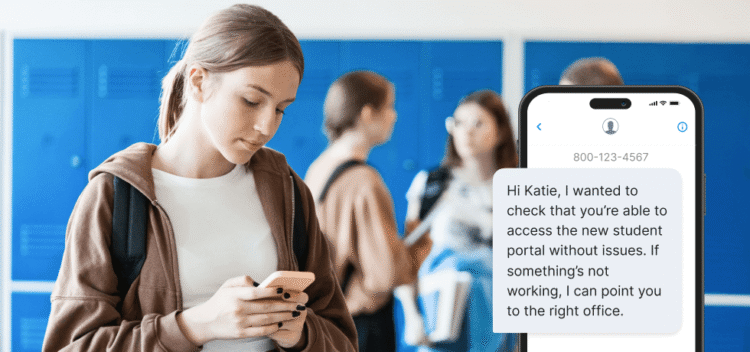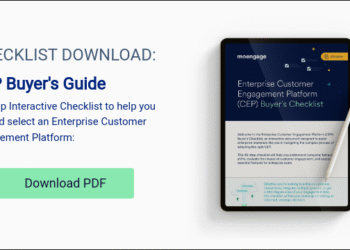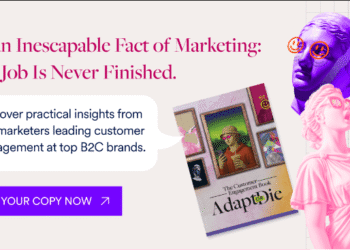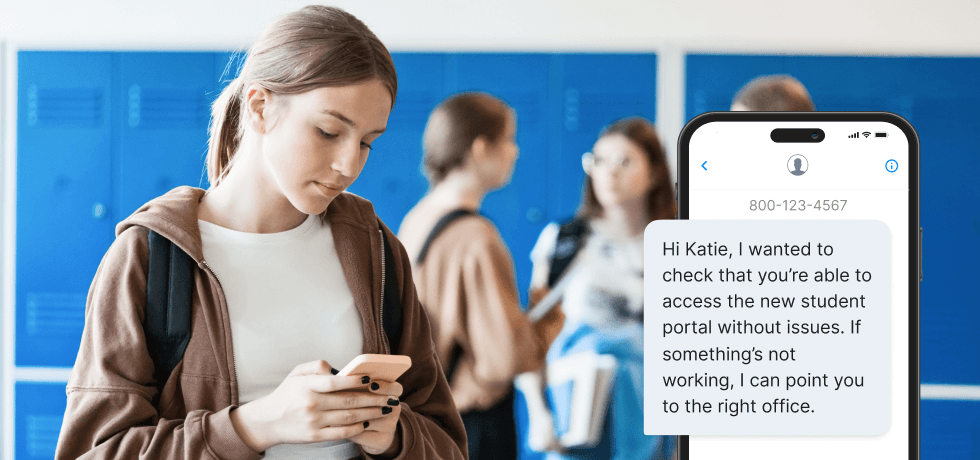
Colleges and universities are rethinking customer service in higher education as students increasingly expect the same level of responsiveness, personalization, and convenience they experience with leading brands.
Borrowing strategies from the corporate world, such as data-driven insights, empathy-based communication, and streamlined support, can help higher education institutions meet modern expectations and deliver more consistent student experiences.
In this article, we’ll go over how you can successfully adopt the corporate higher education customer service model. Let’s get into it.
Unique customer service challenges in higher education
Customer service in higher education faces obstacles that differ from those in corporate environments. Institutions often operate disconnectedly, where academic, financial, and administrative departments work independently from one another.
This can often lead to disjointed communication and inconsistent student experiences. Key challenges for customer service in higher education include:
- Fragmented silos: Limited coordination between departments causes repetitive communication, delays, and confusion for students seeking help.
- Policy constraints: Privacy and data protection policies in the education sector restrict information sharing, which can slow response times and complicate service delivery.
- Emotional load: Students often experience high stress from academic and financial pressures. Administrative issues or slow responses can increase this emotional burden.
- Diversity of student needs: Institutions serve a broad population with different cultural, economic, and learning backgrounds that require inclusive support at scale.
To provide effective service, colleges and universities must overcome these barriers by connecting teams and implementing processes that promote collaboration and empathy.
What corporate customer service models bring
Corporate customer service models have specific elements that higher education can incorporate to improve service delivery, strengthen case management, and promote staff empowerment.
While these components sometimes translate only partially from corporate to higher education, they can guide institutions in improving their customer service systems.
1. Omnichannel support
- What if offers: A connected system for communication across email, chat, SMS, social media, and other platforms, where every interaction becomes part of a single record.
- Value: Reduces fragmentation between departments, ensures students don’t have to repeat information, and creates a unified view of every student interaction.
- Challenge: Privacy and policy constraints limit which channels can be used and may require extra authentication or supervision.
2. SLAs and metrics
- What if offers: Clear performance expectations through Service Level Agreements (SLAs) that define response and resolution times.
- Value: Encourages accountability, enables prioritization, and builds confidence in support teams through measurable goals.
- Challenge: Some student cases, such as financial aid appeals or disciplinary reviews, require input or documentation that can’t fit neatly into strict response windows.
3. CRM systems
- What if offers: A single platform for tracking student communications, inquiries, and outcomes across all departments.
- Value: Improves transparency, reduces duplication, and enhances collaboration across academic, administrative, and support offices.
- Challenge: Integrating CRM tools with existing Student Information Systems (SIS) can be difficult, and strict data privacy policies may restrict what information can be shared.
4. Personalization
- What if offers: Data-driven insights that enable staff to tailor communication and solutions based on a student’s history or preferences.
- Value: Fosters more empathetic, student-centric interactions and helps institutions serve a diverse student population more effectively.
- Challenge: Personalization must be balanced with fairness and data ethics, especially when decisions could appear biased or overly dependent on automation.
5. Feedback loops
- What if offers: Mechanisms such as surveys, sentiment analysis, or focus groups to evaluate and improve support quality.
- Value: Encourages reflection, ongoing training, and process improvements based on real student experiences.
- Challenge: Survey fatigue and slow institutional change can undermine feedback initiatives if results aren’t acted upon promptly.

Solution frameworks: Adapting to higher education needs
To overcome service silos and meet rising expectations, higher education institutions can adapt excellent customer service frameworks and tailor them to their unique structures, policies, and student expectations.
Centering inclusion and accessibility
Exceptional customer service in higher education starts with removing barriers to communication and assistance. Institutions must prioritize accessibility to ensure that communication and resources are intuitive and available to all.
Every student, regardless of ability, language, or background, should be able to easily access information, support, and resources across all campus systems.
Designing the student journey
Understanding the student success lifecycle means mapping every interaction from admission to graduation. By identifying key touchpoints, institutions can refine communication and reduce friction in the academic journey. Regularly reviewing these moments through satisfaction surveys and feedback ensures continuous improvement.
Implementing customer service tools
Modernizing support for everyone’s educational journey requires the right technology stack. Tools like Textmagic Tasks and Point AI add automation and AI assistance to streamline academic advising, ensure accountability, and accelerate routine responses.
Empowering staff through culture and training
A strong service culture begins with staff empowerment. Ongoing training and obtaining the proper customer service certifications are great ways to improve service quality. Relying on existing change management frameworks helps teams align and smoothly adapt to new systems and expectations.
Building proactive and predictive support models
By leveraging predictive analytics, institutions can anticipate challenges before they escalate. Early alert systems identify at-risk individuals while personalized reminders or check-ins encourage student engagement and timely action.
Support beyond academics with the Whole Student model
The Whole Student model recognizes that true success extends beyond academics. Collaboration among student affairs, wellness, and career services ensures learners receive holistic support on mental health, personal growth, and future readiness. By nurturing every dimension of life, institutions cultivate student engagement, resilience, and long-term success.

Higher ed customer service trends to watch
As student expectations evolve, institutions embrace new technologies and service philosophies once reserved for the corporate world. Here are the main higher ed customer service trends to watch in the years to come.
📊 Data integration is essential in higher ed institutions because it connects academic, financial, and administrative systems to create a unified view of each student. This holistic perspective enables predictive outreach, more efficient case management, and reduced duplication across offices.
🤖 AI and chatbots are transforming how institutions manage their networks and provide 24/7 support. According to a 2025 Deloitte report, artificial intelligence can help universities perform predictive maintenance, detect anomalies, and minimize risks by analyzing vast data streams when used securely.
Real-time support ensures fast response times and reduces anxiety around deadlines, billing, and registration. This has also been made possible in recent years by the growing adoption of chatbots in educational institutions.
⚖️ Equity in service is becoming a cornerstone of higher education as the sector shifts from transactional to relationship-based service models. Institutions are examining how access, response times, and communication quality vary across different student groups.
The goal is to ensure that every student, regardless of background, language, or ability, receives the same level of support, as evidenced by UNESCO.
What is good customer service in higher education?
In the context of higher education, good customer service means delivering support that enables students to focus on learning and growth, rather than navigating administrative friction. It’s more than just helping; it’s orchestrating a student experience that is:
- Accessible. Students with diverse needs can engage with support via multiple channels and formats.
- Timely. Responses and resolutions happen quickly, so students aren’t left waiting or pushed into crisis.
- Accurate. Information and guidance are correct, consistent across units, and reflective of current policy and offerings.
- Empathetic. Staff understand and acknowledge the emotional pressures students face and respond with care and respect.
- Proactive. Support anticipates likely student challenges and intervenes before problems escalate.
- Seamless. Transitions between departments and touchpoints feel smooth, and students don’t “fall through the cracks”.
To move from ideals to accountability, institutions need measurable standards. Below are key metrics commonly used in corporate service models adapted for the higher ed environment:
Customer service stories in higher education
The following stories are drawn from Allison Berger’s A Customer Service Model for Higher Education, a study conducted at a private university. The research centered on a student office seeking to strengthen quality assurance and customer service in higher education.
The study focused on a student service office with a diverse customer base after its new supervisor prioritized service improvement and staff training.
Acting as an informal information hub for students, families, and faculty, the office sought to build consistency across fragmented inquiries and foster inclusivity by aligning its goals with diversity and accessibility standards.
During an office retreat, staff discussed exceptional customer service examples. These comparisons helped the team recognize the importance of empathy, accountability, and autonomy in higher-ed settings.
Follow-up surveys confirmed that staff viewed improving customer service in higher education as central to their mission, not a peripheral task. Despite competing priorities, such as implementing a new student information system, participants expressed commitment to training in problem-solving, change management, and diversity.
Their feedback underscored the institution’s need for structured, role-specific, and high-quality customer service development.
Implementation pitfalls to avoid
Even the best-designed customer service initiatives can fall short if implementation isn’t thoughtful and phased. Below are key pitfalls to avoid and how to address them effectively:
- Skipping the pilot phase: Test new systems on a small scale first to uncover technical or process issues before a full rollout.
- No leadership buy-in: Secure visible support from institutional leaders to ensure adequate funding, accountability, and long-term commitment.
- Ignoring compliance and privacy: Always align systems with FERPA and institutional data policies to maintain student trust and protect sensitive information.
- Over-automating communication: Use automation to enhance efficiency, not replace human empathy, especially in emotionally charged or complex cases.
- Lack of change management: Prepare staff through customer service training, clear communication, and phased adoption.
- Neglecting quality assurance and feedback: Establish measurable benchmarks and student feedback loops to drive continuous improvement.
Together, these practices help institutions balance innovation with stability, building a service model that’s scalable, compliant, and authentically student-centered.
Improving customer service in higher education with Textmagic
Modern universities serve diverse communities with high expectations for responsiveness and clarity. Textmagic combines tools that help institutions communicate faster, manage relationships efficiently, and deliver a more connected student experience, such as:
Ready to start with Textmagic?
Simplify student support and build campus relationships.
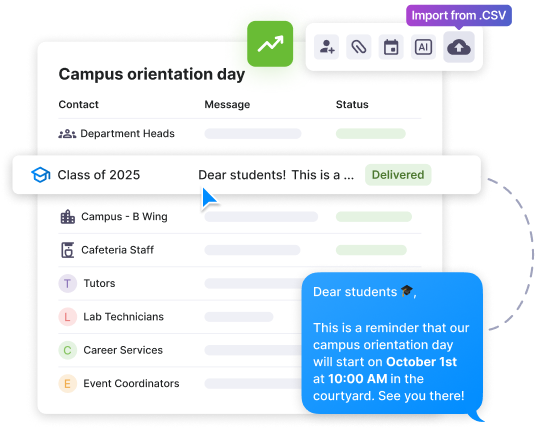
With the right blend of automation, personalization, and unified communication, Textmagic joins institutions in providing excellent customer service in higher education that is on par with their educational mission.
Frequently Asked Questions (FAQs)
Strong customer service in higher education improves student satisfaction, retention, and engagement by ensuring every interaction, from admissions to advising, is responsive, clear, and empathetic.
Corporate models offer proven methods such as omnichannel support, defined response metrics, and data-driven decision-making that help universities modernize their communication and streamline support across departments.
Textmagic centralizes campus communication with tools like a shared inbox, omnichannel chat, and automated texting, helping universities respond faster and provide more consistent student support.
With features like dynamic fields and contact management, Textmagic allows staff to personalize every message, ensuring students receive relevant, human-centered updates that strengthen engagement and trust.

